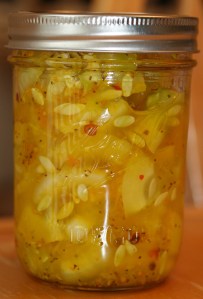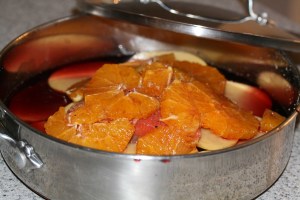Recently a good friend and I did a typical weekend wander through one of our local farmers markets. This particular market isn’t very large, but the diversity and quality of produce is really worth the trip. We ended up buying some ridiculous number of pounds of heirloom tomatoes with the sole intention of making fresh Bloody Mary’s out of them. We juiced the tomatoes. We juiced lemons. We juiced garlic and fennel and onions. We juiced as if it were the only appliance in the kitchen. We did add a little bit of V8 to round out the flavors, add a little consistency to the texture and give it a salt kick. Well, and of course there was the vodka. Honestly, I have can only think a few other examples where I have had a fully homemade version that is so VASTLY superior to the normal thing that they are almost not even the same thing. All I can say is this. Quick! Get thee to the market. Buy a ton of the most colorful, crazy looking tomatoes you can find. Break your juicer out of hiding (you know you have one somewhere) and be one with the mixology. Experience the intensity of flavor, smell, and the incredible visual treat that the foamy multicolored juice delivers.
fennel and onions. We juiced as if it were the only appliance in the kitchen. We did add a little bit of V8 to round out the flavors, add a little consistency to the texture and give it a salt kick. Well, and of course there was the vodka. Honestly, I have can only think a few other examples where I have had a fully homemade version that is so VASTLY superior to the normal thing that they are almost not even the same thing. All I can say is this. Quick! Get thee to the market. Buy a ton of the most colorful, crazy looking tomatoes you can find. Break your juicer out of hiding (you know you have one somewhere) and be one with the mixology. Experience the intensity of flavor, smell, and the incredible visual treat that the foamy multicolored juice delivers. 
It is worth it like you just can’t believe. Our recipe was inspired by the classic version from Cook’s Illustrated:
Cindy’s Summer Bloody Mary’s
- 2 cups freshly squeezed heirloom tomato juice (this includes however much garlic, onion, and fennel you included in the juice)
- 1 cup V8 juice
- 1 1/2 cup vodka
- 1 tablespoon worcheshire sauce (or to taste)
- 1 tablespoon prepared horseradish (although freshly grated root would add only good things to this recipe)
- 1/4 cup freshly squeezed lemon juice
- salt and black pepper to taste
- pickle juice (completely optional and definately to individual taste)
- squirt of Sriracha (again, completely optional and definately to individual taste)
- celery sticks, carrots, pickles, olives – to taste – for garnish
Serve over ice and drink on the patio with friends. Remark how you will never look at Bloody Mary’s the same way again. Then make another batch.
Other uses for the fresh mix…marinade for steaks or chicken….add cream to the mix (if the vodka hasn’t already been added) and freshly sliced basil for a spectacular fresh tomato soup.
Points here? Just for the actual vodka…so adjust accordingly.

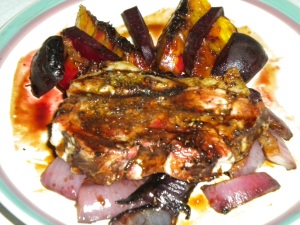
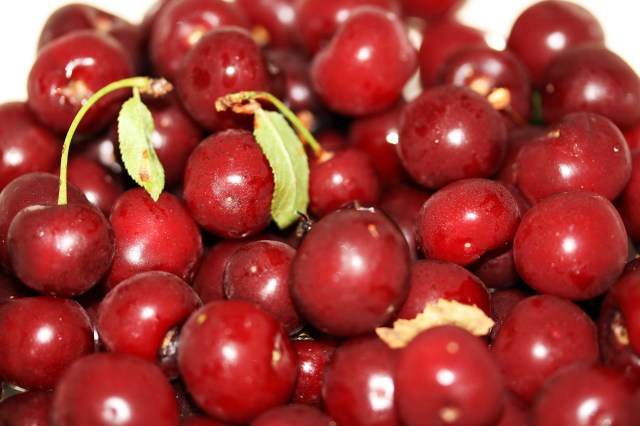
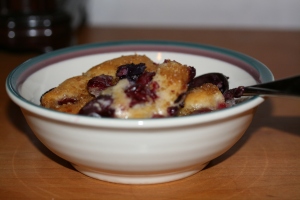
 e used if you making a bowl of eyeballs to put in your haunted house, but otherwise not a great product. There are some exceptions. But, this post is about the fresh lovelies we see now. They are covered in a dry, bumpy, pinkish brown skin that has to be removed before eating. Then there is the rather large dark brown pit that must be removed. All this work reveals a translucent pearly white to pinkish flesh that has the consistency of a grape. But a taste like no other. It has an intense sweetness and floral quality that I find hard to describe, but really love. I love them as part of a nice cheese board with other fruits and some nice whole wheat crackers or sourdough bread. I have also had them in cocktails like
e used if you making a bowl of eyeballs to put in your haunted house, but otherwise not a great product. There are some exceptions. But, this post is about the fresh lovelies we see now. They are covered in a dry, bumpy, pinkish brown skin that has to be removed before eating. Then there is the rather large dark brown pit that must be removed. All this work reveals a translucent pearly white to pinkish flesh that has the consistency of a grape. But a taste like no other. It has an intense sweetness and floral quality that I find hard to describe, but really love. I love them as part of a nice cheese board with other fruits and some nice whole wheat crackers or sourdough bread. I have also had them in cocktails like 